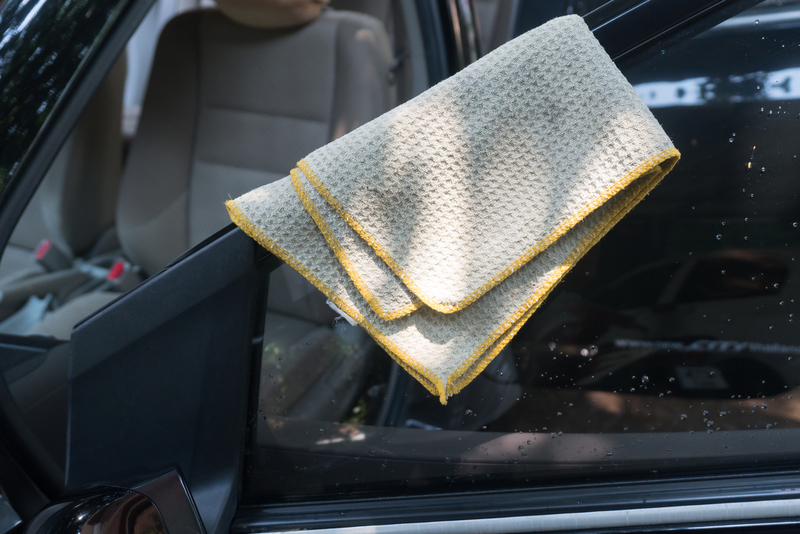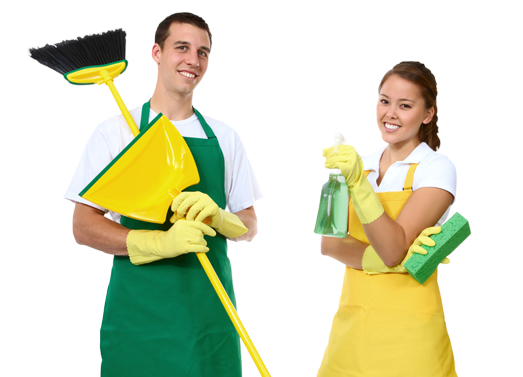Practical Tips for a Spotless and Burnt-free Stovetop
Posted on 17/06/2025
Practical Tips for a Spotless and Burnt-free Stovetop
Cooking at home offers a wealth of benefits, from healthier meals to the satisfaction of crafting something delicious. But, your joy of cooking can quickly be dampened by the sight of a greasy, food-stained, or burnt stovetop. Keeping your stovetop clean and free from burnt-on residues not only preserves its appearance, but also ensures it works more efficiently and safely. Below, find detailed, actionable, and effective stovetop cleaning tips that will transform your kitchen routine and keep your stovetop spotless and burn-free, day after day.

Why a Clean Stovetop Matters
While aesthetics play an undeniable role--after all, everyone loves a sparkling kitchen--a clean stovetop goes beyond simple appearances. Excess food debris, grease, and burnt-on spills can become fire hazards, give off unpleasant odors, and even affect the flavor of your dishes. Moreover, sticky residue can harbor bacteria, impacting hygiene and health.
- Safety: Reduce risk of kitchen fires.
- Efficiency: Clean burners heat more evenly.
- Longevity: Wear and tear is slowed by regular care.
Understanding Your Stovetop
Not all stoves are created equal, and successful burnt-free stovetop care starts by knowing your appliance. Broadly, home stovetops come in three main types:
- Gas Stovetops: Feature open flames and removable burner grates.
- Electric Coil Stovetops: Have raised metal coils that heat up directly.
- Glass/Ceramic Stovetops: Sleek, flat surfaces with radiant or induction heating elements beneath smooth glass.
Your approach to cleaning depends on your specific cooktop, so be sure to check your manufacturer's care guide for recommendations and warnings.
Everyday Habits for a Spotless Stovetop
1. Wipe Down After Every Use
Prevention is the best cure. Immediately after cooking (and once the stovetop is cool!), wipe down the surface with a damp microfiber cloth. This removes oil splatters and fresh food residues before they harden or burn.
- For gas and electric coil stoves: Remove burner grates or coils for a thorough wipe.
- For glass tops: Use a non-abrasive sponge or cloth to avoid scratches.
2. Clean Up Spills Promptly
It's tempting to ignore that small splatter, but every overlooked spill is a future stubborn stain or burn mark! When something boils over, turn off the burner and carefully clean up the mess as soon as the stove cools.
3. Use the Right Cookware
Choose flat-bottomed pans and pots. Warped or uneven cookware can trap food between the burner and pot, leading to more burns and making cleaning harder.
4. Avoid Cooking on High Unless Necessary
Burnt-on messes often occur when contents spill over due to excessive heat. Use medium or low settings for most dishes to minimize splatters and boiling over.
Deep Cleaning Methods for Every Stovetop Type
1. Gas Stovetop Cleaning Guide
- Remove and Soak Grates: Once cool, take off grates and burner caps. Soak them in hot, soapy water for at least 20 minutes.
- Scrub with a Non-scratch Pad: Gently scrub off grease and burnt-on food using a paste of baking soda and water. A toothbrush works wonders for tight spots.
- Clean Burners and Surface: Wipe down the surface with a damp, soapy cloth. For stubborn stains, use a vinegar spray and let it sit for 10 minutes before wiping.
- Rinse, Dry, Reassemble: Dry each part thoroughly to prevent rust, then put everything back in place.
2. Electric Coil Stovetop Deep Clean
- Unplug and Cool Coils: Safety first! Ensure coils are unplugged and completely cool.
- Remove Drip Pans: Take out pans and soak in hot, soapy water.
- Wipe Coils: Use a damp cloth (never immerse in water). For tough buildup, a baking soda paste can gently scrub away grime.
- Clean Surrounding Surface: Wipe the stovetop area with a soft cloth and mild detergent.
3. Best Practices For Glass/Ceramic Stovetops
- Daily Cleaning: Use a dedicated glass stovetop cleaner or a mixture of vinegar and water for shiny results.
- Remove Burnt-On Residue: Sprinkle baking soda over stubborn spots, lay a damp towel on top for 10-15 minutes, then gently scrape with a plastic razor blade scraper.
- Avoid Abrasives: Never use steel wool or harsh scouring pads; they'll create permanent scratches.
Natural Solutions for a Burn-free Stovetop
Store-bought products can be helpful, but simple pantry items often do the trick for a spotless and burnt-free cooktop:
- Baking Soda: Forms a gentle abrasive paste when mixed with water; lifts tough stains without scratching.
- White Vinegar: Cuts through grease and dissolves light burnt-on spots, especially on glass.
- Lemon Juice: Natural deodorizer and mild acid to tackle stubborn marks.
- Salt: When mixed with baking soda and water, salt helps power through caked-on spills.
For burnt residue, sprinkle baking soda directly on the cooled area, spray lightly with vinegar, cover with a damp cloth, and let sit for 20 minutes. Wipe clean afterward--a great remedy for any stovetop!
Preventing Stovetop Burns and Stains
- Always cover pots and pans when boiling or frying. This reduces splatter and catch boil-overs before they hit the surface.
- Use splatter guards for particularly messy recipes, like frying bacon or deep-frying.
- Line drip pans (on electric coil stoves) with aluminum foil for an easy cleanup--just remember to change the foil regularly.
- Avoid using heavily stained or charred cookware, which can transfer marks to the stovetop.
Stubborn Burnt-On Messes? Try These Expert Tricks
1. The Baking Soda & Vinegar Method
- Generously sprinkle baking soda over the burnt area.
- Spray with vinegar and allow the fizzing to subside.
- Place a wet towel over the area, let sit for 15-30 minutes, then scrub gently.
2. The Razor Blade (Or Scraper) Technique
- For glass-top stoves, use a dedicated razor blade scraper at a very shallow angle to loosen burnt patches. Always follow up with a gentle, soapy wipe-down.
3. Commercial Cleaners
- For severe stains, a stovetop-safe cleaner (labeled for your stove type) can help. Follow the instructions to avoid damaging surfaces or voiding warranties.
Maintaining a Spotless and Burn-free Stovetop: Weekly & Monthly Tasks
In addition to daily care, deeper cleaning a few times a month keeps your stovetop in top form.
- Weekly: Remove all removable parts and soak them in hot, soapy water. Scrub everything clean and let dry thoroughly before reassembling.
- Monthly: Inspect burners for clogs (especially on gas stoves) and check electric coils for signs of wear. Take time to buff glass stovetops with a polish for maximum shine.
Handy Tools & Products for a Spotless Stovetop
- Microfiber Cloths: The gold standard for surface cleaning; traps dust and grease for a quick clean.
- Non-scratch Sponges: Perfect for lifting stuck-on bits without damaging the surface.
- Toothbrushes: Great for corners, grates, and hard-to-reach crevices.
- Razor Blade Scrapers: Essential for glass stove owners wrestling with burnt-on messes.
- Stovetop Cleaner: Brands like Bar Keepers Friend, Weiman, or Cerama Bryte are specifically formulated for stovetops.
Common Mistakes to Avoid For a Spotless Stovetop
- Don't wait until tomorrow to clean up spills. Letting debris sit only leads to burns and stains that are much more difficult to remove.
- Avoid harsh chemicals not designed for stovetops, which can discolor or corrode the surface.
- Do not use abrasive pads or steel wool on glass or ceramic stoves--they will scratch and dull the finish.
- Never immerse electrical elements or plugged-in coils in water.
- Don't reassemble until dry. Always ensure parts are bone-dry to prevent rust and ensure proper function.
Stovetop Cleaning Safe Practices
Prioritize safety while keeping your cooktop spotless:
- Ensure the stovetop is completely cool before cleaning.
- Unplug coils or electric burners before cleaning or soaking.
- Ventilate your kitchen. Open windows or switch on the hood if using products with strong fumes.
- Avoid over-saturating controls or cracks where liquid can seep and cause electrical faults.

Summary: Simple Habits Lead to a Burnt-free and Spotless Stovetop
Maintaining a burnt-free, spotless cooktop requires minimal effort when integrated into your daily routine. Wiping down after every use, cleaning up spills as they occur, using the right tools, and performing regular deep cleans will keep your kitchen both safe and beautiful. With the practical stovetop cleaning tips and strategies listed above, your stovetop can remain as clean as the day your kitchen was new.
Give Your Stovetop the Care It Deserves!
Adopt these cleaning habits and your stovetop will reward you with years of efficient, enjoyable, and worry-free cooking. Share these tips with family and friends so everyone can enjoy a beautifully clean--and burn-free--kitchen experience!
Frequently Asked Questions (FAQs) about Stovetop Cleaning
-
How often should I clean my stovetop?
Light wipe-downs should happen daily or after every use; deep cleans are recommended weekly or at least monthly. -
Are natural cleaners safe for all stovetops?
Baking soda and vinegar are safe for most, but always avoid abrasives on glass tops. Spot-test first to be sure. -
Can burnt-on stains be completely removed?
Most can be, especially if treated quickly. Stubborn stains on glass may need repeated gentle treatment.
By following these comprehensive stovetop cleaning and prevention tips, your kitchen will both look and function at its best. A spotless, burnt-free stovetop is within easy reach--starting today!



